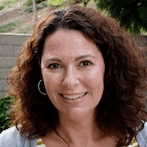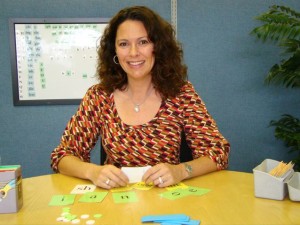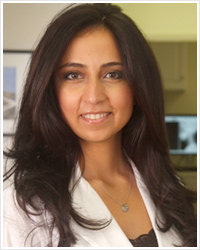
by PRIDE Reading Program Admin | Jun 15, 2015 | A PRIDE Post, Reading Skills, Summer Programs
Summer break is finally here! Although our kids deserve a vacation from the daily homework load – we don’t want to completely let their reading skills slip during this summer vacation. Here is a very family-friendly list of activities you can try at home this summer with your kids to keep the reading skills sharp and active in those kiddies:
- Cook with your kids. Cooking is a great way for the family to spend fun and educational time together. Reading food labels and recipes can help your children improve their reading skills and learn the meanings of unfamiliar words. You can also work up an appetite by reading a story about food. Then make and eat the food you read about.
- Listen to audio books in the car while traveling. Spending time listening to books strengthens listening, concentration and imagination skills in children. It also gives them an opportunity to improve vocabulary and language skills. Take your child’s iPod along on car trips or while you are running errands during the summer break.
- Take your child grocery shopping. Let your child carry the shopping list as you shop. They can read off the items you need. Label reading is also a great reading task for a child. You can have them look up the ingredients on the labels or ask them to research which breakfast cereal has the least amount of sugar in it.
- Play board games. Here is your opportunity to expand your child’s mind while also having fun and spending time together. Games like Scrabble, Boggle and other word games are great for challenging the minds of kids. Some games require reading for clues or reading directions.
- Read about your vacation destination before you go. Have your child read about your travel spots ahead of time and help plan the trip for you. If you go camping, explore the wildlife and scenery on-line.
- Pick your favorite author. Try to read all the books by a favorite author and list them on a chart. Then write a letter to the author. Most authors have their own websites with contact information, book titles, games and more.
- Visit a museum or zoo. There will be lots and lots of signs and descriptions to read which will encourage non-fiction reading vocabulary.
- Go to the library. Access all those wonderful library resources, including reading incentive programs and opportunities for volunteer work for older children.
- Plant a vegetable garden. Read books together about gardening. Read directions to plant seeds. Children can research online for growing tips and learning how to take care of their vegetables.
- Campfire Stories. Set up a tent in the backyard and have your children take turns reading campfire stories. Pick out some fun scary mysteries and don’t forget the s’mores.
- Don’t watch TV – read it! If it is available, have your child watch close captioned TV with the sound off. Not only builds reading skills but also builds empathy for those who are hearing impaired.
- Keep a summer scrapbook. Tape in souvenirs of your family’s summer activities such as pictures, ticket stubs, photos, etc. The kids can write captions and read them aloud as you look at the book together.
Learn more about the New PRIDE Reading Program
_______________________________________________________________

Karina Richland, M.A. is the Founder and Director of PRIDE Learning Centers, located in Los Angeles and Orange County. Ms. Richland is a certified reading and learning disability specialist. Ms. Richland speaks frequently to parents, teachers, and professionals on learning differences, and writes for several journals and publications. You can visit the Pride Learning Center website at: www.pridelearningcenter.com

by PRIDE Reading Program Admin | May 19, 2015 | A PRIDE Post, Visual Processing Disorder
Visual processing disorder has nothing to do with eyesight or vision; it has to do with the brain not processing the information which the eyes take in. Children with visual processing disorder have difficulties learning visual information due to the deficits in the visual control system in their brains.
Children diagnosed with visual processing disorder struggle in these 3 areas in reading and writing:
Visual Word Memory Problems
Children with visual processing disorder will often show abnormal behaviors during reading, such as:
- Frequent word or line skips
- Tendency to move their whole head to read instead of just their eyes
- Difficulties with automatic sight-word recognition
- Double vision, squinting or closing or rubbing one eye
- Complaints of visual blurring or letters moving around, popping in and out of the paper
- The letters in words are not in sequence
Letter and Symbol Reversal Problems
It is common for children under the age of 7 to reverse letters or numbers when writing or to make letter substitutions when reading. Children with visual processing disorder will still make reversals and substitutions beyond the age of 7. These children will also show problems with letter formation that extends far beyond simple difficulties with reversals.
Contrast Sensitivity Problems
Children with visual processing disorder often have difficulties with poor visual contrast sensitivity. These children may experience:
- Glare from the paper
- Eyestrain
- Difficulties making out the letters
Symptoms may be worse in some lights than others. Fluorescent lights frequently produce the most problems.
Helping a Child with Visual Processing Disorder
The best learning environment for a child with visual processing disorder is a multisensory setting. Multisensory teaching utilizes all the senses to relay information to the students. The teacher accesses the visual, auditory, and kinesthetic pathways in order to enhance memory and learning.
For example, when learning the vowel combination “oa” the student might first look at it and then have to trace the letters in the air while speaking out loud. This combination of listening, looking, and moving around creates a lasting impression for the student as things will connect to each other and become memorable.
If a child struggling with visual processing disorder is given a task that uses just vision, without drawing upon other senses, the child will be at a disadvantage. When taught with a multisensory approach, children will learn alphabetic patterns and words by utilizing all pathways – hearing (auditory), seeing (visual), touching (tactile) and moving (kinesthetic).
Learn more about the New PRIDE Reading Program
________________________________________________________________________

Karina Richland, M.A. is the Founder of Pride Learning Centers, located in Los Angeles and Orange County. Ms. Richland is a certified reading and learning disability specialist. Ms. Richland speaks frequently to parents, teachers, and professionals on learning differences, and writes for several journals and publications. You can visit the Pride Learning Center website at: www.pridelearningcenter.com

by PRIDE Reading Program Admin | May 16, 2015 | A PRIDE Post, ADHD
by Dr. Nona Djavid
Our children are facing an epidemic. We live in an age that often replaces health with prescription drugs. 1 out of 10 American children has attention-deficit/hyperactivity disorder (ADHD). But what is even more alarming is two-thirds of those kids are taking prescriptions like Ritalin and Adderall, the very same drugs responsible for 23,000 emergency room visits in 2011. ADHD without prescription drugs is possible!
We may be setting a precedent here, where we are substituting healthy lifestyle choices with ADHD for dangerous prescription drugs. As a chiropractor certified to see children and babies, I try and educate parents who bring in their children to my office about the choices they have to help their children diagnosed with ADHD. When children and parents are given the tools and treatment needed for optimal nervous system function, life changing results happen. This happens every day in our office. There are so many alternatives to prescription drugs. Chiropractic care, which markedly improves neurological function and eliminates blockages in the nervous system, can help restore optimal function of your child’s nervous system and brain function.
3 Things You Can Do:
They Are What They Eat:
Gluten-free diets with little-to-no processed foods are the best choice, but if you can’t fully commit to that, then avoid empty carbs like white breads and buttery cracker snacks. These break down quickly into sugars, providing little nutrients, elevating blood sugar levels and interrupting proper neurological function. INSTEAD: offer grainy breads (oatnut or whole wheat crackers and breads.) You can replace buns and breads entirely with gluten-free quinoa breads or brown rice buns. Also avoid ALL sugary drinks. These are the principle contributor to increased incidence of diabetes in children. This means no sodas, fruit juices, sports drinks or ANYTHING with added sugar or Fructose. INSTEAD: Find clever ways to get them to drink more water. You can try blending or infusing their water with real fruit like strawberries, lemons, blueberries or peaches.
Check Their Spines:
Chiropractic care is a safe and effective method for the treatment of ADHD. Most cases stem beyond neurological, and can even be structural. Postural problems, when correctly adjusted with corrective chiropractic care, can help heal complications associated with ADHD. Postural misalignments can affect neurological development and inhibit complete and healthy brain function. With chiropractic, the structural problem can be identified and the neurological problem improved. With chiropractic adjustments, the spine realigns to its peak state. A correctly aligned spine creates an optimal nervous system – allowing for normalcy and balance in behavioral functions.
Get Them Motivated:
ADHD without prescription drugs is possible! It’s important to look deeper into your child’s wonderful creative mind, and channel their bountiful energy. Find activities that encourage your child to become more active and explore mental facets that they seem interested in. If they’re constantly climbing up on things, get them involved in indoor rock climbing! If they’re constantly peppering you with questions and asking how things work, maybe they’d be interested in film making. Often an overactive brain is misdiagnosed into a behavioral disorder.
Learn more about the New PRIDE Reading Program
______________________________________________________________
Dr. Nona Djavid
Founder & Lead Chiropractic Physician
Dr. Nona Djavid is a well-respected and trusted doctor of chiropractic and wellness coach with a private practice in Newport Beach, CA. Founder and head chiropractor at the Wellness Choice Center, Dr. Djavid is dedicated to the creation of transformative experiences of vitality for her patients, through nutritional counseling, lifestyle changes, and natural alternatives.
A graduate of University of California at Berkeley in the field of Molecular and Cellular Biology with an emphasis in Neurology, Dr. Djavid continued her education at Life Chiropractic College where she earned her post Doctorate studies in Neurology and Chiropractic Biophysics. With a background in neurological sciences she came to understand the nervous systems control over the body. Through her research the importance of the nervous system was evident as the key to the overall health of the body. Specialties of Dr. Djavid include postural correction, and a unique knowledge in extremity adjustments.
Dr. Djavid is also the founder of WOW – Women of Wellness group – an organization that empowers female health care professionals to build healthy caring relationships through education and integrated health and wellness services.
With a state of the art facility at her disposal, educational background and her genuine passion for life, people, and health, Dr. Djavid provides the very best care with intelligence and compassion. For more information check out her website at: www.wellnesschoicecenter.com

by PRIDE Reading Program Admin | May 7, 2015 | A PRIDE Post, Reading Skills
Getting your child interested in reading is one of the most important things you can do as a parent. I understand it isn’t always easy. Just try to think of your time and energy as an investment in your child’s reading future. Here are some practical tips for getting your child interested in reading…
While there aren’t movie equivalents for every book, there is a large selection of children’s literature out there. If you can find them, watch and discuss them together. Some suggestions are: A Series of Unfortunate Events: Lemony Snicket, Charlie and the Chocolate Factory, To Kill a Mockingbird, Charlotte’s Web, Hoot, etc.
- Find books with cartoons or humor — which only a child would find amusing
Not everything needs to be a learning lesson. Letting children read books such as Big Nate or Diary of a Wimpy Kid will keep them engaged and entertained. Although adults might find the language and humor distasteful, children find it very funny and are therefore more motivated to read.
- Zero in on your child’s passions and choose books and magazines focused on areas of interest
Find books on specific topics to keep your child’s interest, such as science, baseball, American Girl dolls, etc. Children who already have the background knowledge, language and vocabulary before beginning a book will have an easier time getting through the reading. Order a magazine subscription to Sports Illustrated for Kids or Nickelodeon. Children love receiving mail and reading ‘their’ magazines.
- Get your child an email account and, together, check it regularly
Using the computer to read and write is a huge advantage for most students. By letting young children write and send email, they practice reading, writing and spelling. Teach your child how to use spell check before sending off messages. Be sure to monitor your child’s ‘pen pals’ – who is your child writing to and receiving mail from? Let your child pick out a few family members, including grandparents and maybe two or three friends. You will find that by using email regularly, your child becomes very strong in typing (keyboarding) and using the computer.
- Find an author that your child likes and stick with it
If your child loves reading Hank Zipzer by Henry Winkler or Tales of a Fourth Grade Nothing by Judy Blume, then you have found a writing style which stimulates your child’s interest. Go through the entire series. Don’t worry if the reading is below grade level: your child is reading for pleasure and for practice. Also remember, just because you loved a certain author or series when you were a kid, this doesn’t mean your child will love the same books you did. Browse the bookstore or library and find the newest, most modern series. Usually these books contain language and themes to motivate the most reluctant reader. Kids need to relate to what they are reading, and modern language usage helps.
- Get books with large print
For some children with learning difficulties, getting books with larger type can be helpful. Maybe it’s because the pages are less intimidating with less text, or maybe it is the fact that there are fewer words on each line, but it seems to make the reading a bit easier.
- Let your child talk to you about the book they are reading.
When we adults read books we enjoy, we like to talk about them. After reading a book, we don’t necessarily want to write a summary, book report or make a project of it. We just want to discuss it with someone else. Look interested in what your child is reading (yes, even if it is Captain Underpants) and ask questions and have your child tell you about it. Laugh with your child about the funny parts (even at the bathroom jokes) and help your child feel good about reading.
Learn more about the New PRIDE Reading Program
_____________________________________________________________________________________________________________________

Karina Richland, M.A. is the Founder of PRIDE Learning Centers, located in Los Angeles and Orange County. Ms. Richland is a certified reading and learning disability specialist. Ms. Richland speaks frequently to parents, teachers, and professionals on learning differences, and writes for several journals and publications. You can visit the PRIDE Learning Center website at: www.pridelearningcenter.com

by PRIDE Reading Program Admin | Apr 24, 2015 | A PRIDE Post, Auditory Processing Disorder
At PRIDE Learning Center, we offer Auditory Processing reading help. It is just amazing how well our kids learn to read, write and comprehend using an Orton-Gillingham reading program.
What is Auditory Processing Disorder?
Auditory Processing is a language processing disorder where a child has significant trouble processing sounds, particularly with the sounds associated with speech. It is a very common learning disability and affects about 5% of school-age children. PRIDE Learning Center offers Auditory Processing Reading Help by using an Orton-Gillingham reading program. This is the program that we at PRIDE are experts at!
What is Orton-Gillingham?
Dr. Samuel T. Orton and Dr. Anna Gillingham developed the Orton-Gillingham approach in the 1930’s. In Orton-Gillingham reading is taught sequentially proceeding from single letters and symbols to one-syllable words and then to longer words. Multisensory approaches are emphasized throughout, with each step of instruction incorporating auditory, visual, and kinesthetic channels. Writing and letter formation are taught systematically, one letter at a time, and each lesson includes emphasis both on auditory and visual aspects of letters and words. Orton-Gillingham includes teaching visual strategies for recognition of phonetically irregular words, and also provides explicit, systematic instruction in the development of vocabulary and reading comprehension.
How does using an Orton-Gillingham reading/spelling program help a child with Auditory Processing Disorder?
Simultaneous Multisensory Instruction: Children with auditory processing deficits who use all of their senses when they learn (visual, auditory, tactile, and kinesthetic) are better able to store and retrieve the information. The child with APD might see the letter B, say its name and sound, and write it in the air all at the same time.
Intensive Instruction: Reading instruction for children with auditory processing must be much more intense, and offer much more practice, than for regular readers.
Direct, Explicit Instruction: Children with APD need to be taught directly and explicitly each and every phoneme (sound) of the English language. They must be taught one spelling rule at a time, and practice it until it is stable in both reading and spelling, before introducing a new rule.
Systematic and Cumulative: Orton-Gillingham starts at the very beginning and creates a solid foundation with no holes. It is taught by presenting one rule at a time and practicing it until the child can automatically and fluently apply that rule both when reading and spelling. Previously learned material is constantly repeated into each new lesson and students progress forward in their reading and spelling with no gaps.
Children with Auditory Processing Disorder need more structure, repetition and differentiation in their reading instruction. They need to learn basic language sounds and the letters that make them, starting from the very beginning and moving forward in a gradual step by step process. This needs to be delivered in a systematic, sequential and cumulative approach. For all of this to “stick” the children will need to do this by using their eyes, ears, voices, and hands.
Learn more about the New PRIDE Reading Program

Karina Richland, M.A. is the Founder of PRIDE Learning Centers, located in Los Angeles and Orange County. Ms. Richland is a Certified reading and learning disability specialist. Ms. Richland speaks frequently to parents, teachers, and professionals on learning differences, and writes for several journals and publications. You can visit the PRIDE Learning Center website at: www.pridelearningcenter.com
Page 19 of 35« First«...10...1718192021...30...»Last » 






